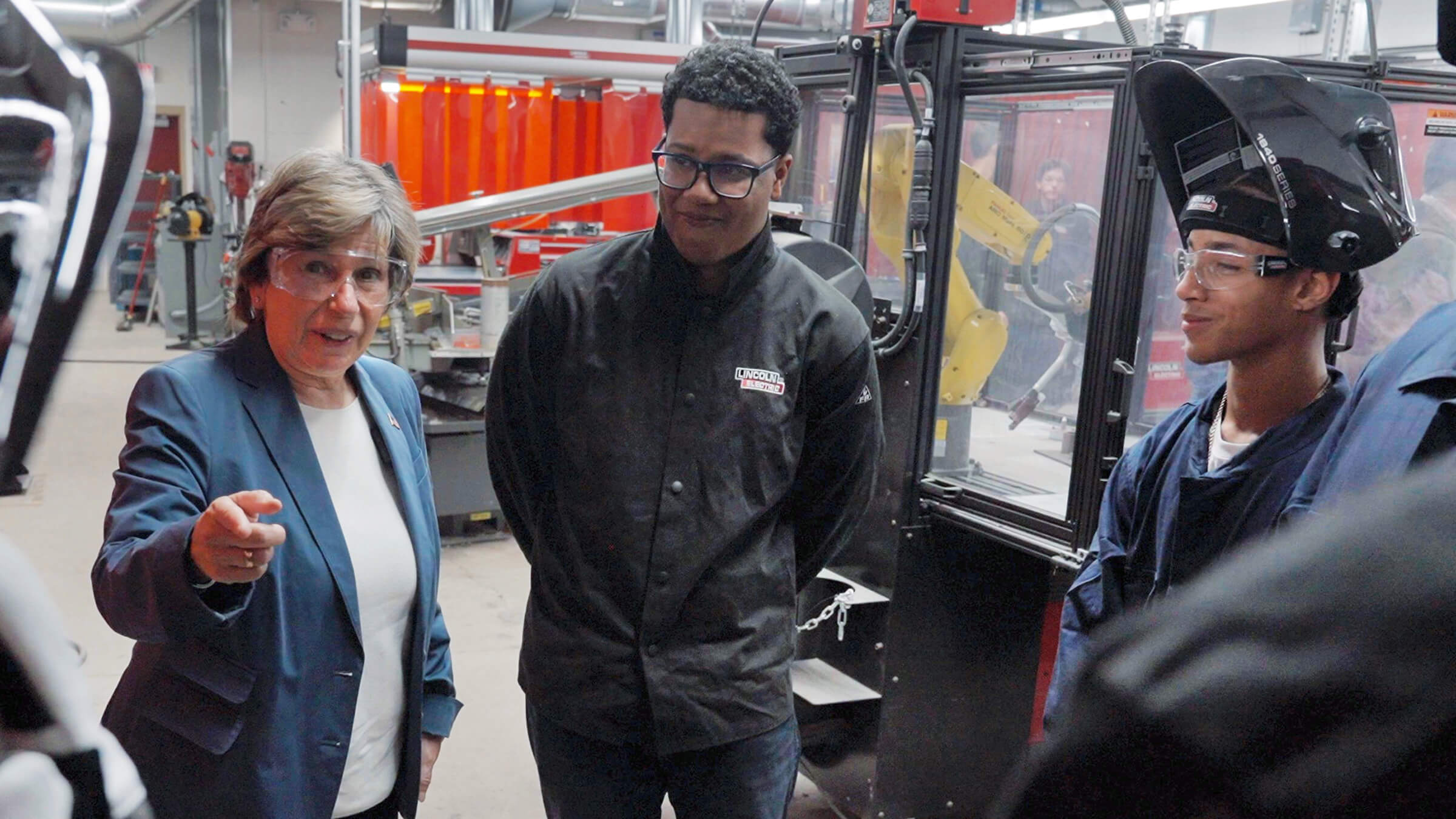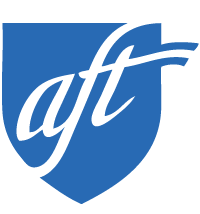Creating opportunity and bridging divides
Giving students access to experiential learning like CTE is a powerful way to address many of our kids’ and our country’s greatest challenges.

Weingarten, left, with students at Corcoran High School in Syracuse, NY, on Oct. 16, 2023.
Are we becoming an increasingly dis-United States? Extremist politicians exploit anger and resentment, many traditional and social media outlets fuel grievances and distrust of “the other,” and, despite the strong economic recovery underway, inequality between working people and the wealthy remains unacceptably high. Lincoln’s warning about a house divided comes to mind. It might just be that the schoolhouse is where we can do some of the most effective work to unite Americans and protect our democracy—not in a political way, but by encouraging young people to appreciate our diverse society, and by equipping them with the skills and knowledge they need to succeed in college or good jobs. These tangible actions—that help people have a better life and feel more hopeful, connected and secure—not only benefit individuals but also can help heal our divisions.
I’ve seen firsthand that one of the best ways to do this is through career and technical education, a type of experiential learning that equips students for 21st century careers. The AFT and the United Federation of Teachers recently brought teams from 19 school districts from around the country to New York City for our annual Center for School Improvement Leadership Institute, which this year centered around career and technical education.
The teams—composed of classroom teachers, CTE coordinators and school district leaders—heard from students and staff from programs that successfully prepare young people for high-skill careers. One high school senior described her cybersecurity work at the Brooklyn STEAM Center: For one project, she merged the computer networks of two companies. For another, she hacked into her teacher’s Wi-Fi network (with permission!).
Preparing young people for skilled careers creates opportunity. It is an “anti-poverty program,” as several participants noted. Career-prep programs can and do change students’ life trajectories, as high school students from Lynn, Mass., attested. One has a job as an electrician lined up for after graduation; another will attend Rutgers University on a full scholarship. Students at New York City’s Aviation High School graduate with in-demand Federal Aviation Administration certifications and are eagerly snatched up for aviation careers, many starting at $80,000 annually. A student at New York City’s Food and Finance High School who immigrated to the United States as a child said she had thought the school would open doors to jobs in the service industry. Instead, she said, “it opened all the doors for me.”
Leo Gordon, vice president for CTE high schools for the UFT, laid out the main components of successful CTE programs: a strong academic curriculum, faculty who are highly trained in their content areas, a full sequence of CTE-related credits, and partnerships with industries that will welcome students when they graduate. Kids in CTE programs are assessed by showing what they know, demonstrating what they can do, and reflecting on what they have learned—often gaining industry-recognized credentials in the process. That’s a lot more authentic, relevant and future-focused than a high-stakes standardized test.
Ninety-four percent of students who concentrate in CTE graduate from high school, and 72 percent of them go on to college. And career education can be particularly life-changing for the 60 percent of high school students who do not go to college. School systems can and should provide many more students access to these opportunities. Federal funding to start or expand CTE programs is available through the Perkins Act, the Every Student Succeeds Act, and the Workforce Innovation and Opportunity Act.
CTE is not just about academic learning and workforce preparation. New York State United Teachers President Melinda Person described asking a student involved in robotics competitions what he was learning, expecting him to describe coding or engineering. Instead, the student told her: “I learned how to respect my opponent and how to be a good teammate.” Those are lessons many of us would do well to take to heart, particularly politicians who stoke divisions instead of seeking solutions to our shared challenges.
Giving all students access to experiential learning like CTE is a powerful way to address many of our kids’ and our country’s greatest challenges, which is why it is a central component of the AFT’s Real Solutions for Kids and Communities campaign. CTE is engaging, relevant and fun—powerful pulls as educators confront learning loss and attendance challenges. Students graduate prepared for higher education and with marketable skills for well-paying jobs—jobs that can help rebuild America’s middle class. And, in this time of anxiety and division, when people have a path to a better life, when they are more hopeful and respect each other, they are less likely to tear others down. It’s an important part of providing all our kids a safe, joyful and engaging education that prepares them for life in our diverse democracy and for the opportunities ahead.













